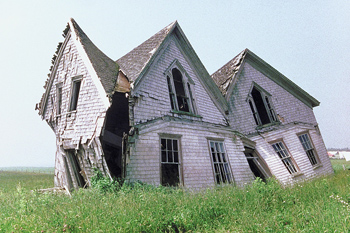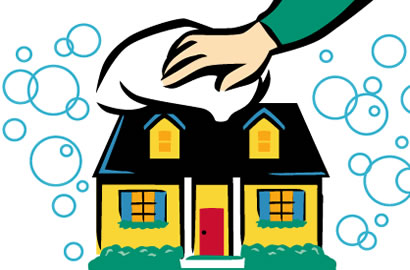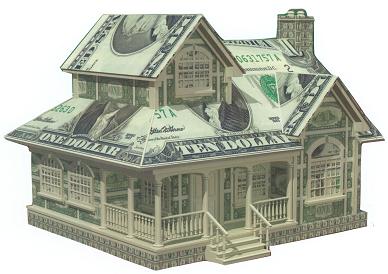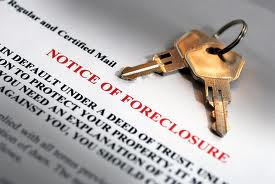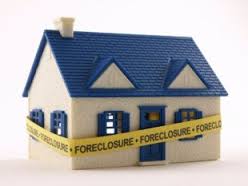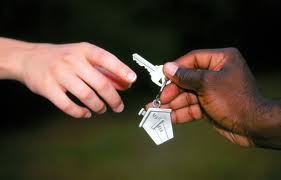
BLOG
Real Estate Predictions: Multifamily will drive nationwide growth
So happy to see the market changing! If you were on the fence about buying before...make sure you fall on the side where the grass is greener! Time to buy!
How to Assess the Real Cost of a Fixer-Upper House
When you buy a fixer-upper house, you can save a ton of money, or get yourself in a financial fix. People see shows on television and think it's easy to purchase a home that needs fixing. Know what you are getting into before you put the money down on the table! Call me with your questions Laura Key 310.866.8422
1. Decide what you can do yourself
TV remodeling shows make home improvement work look like a snap. In the real world, attempting a difficult remodeling job that you don’t know how to do will take longer than you think and can lead to less-than-professional results that won’t increase the value of your fixer-upper house.
- Do you really have the skills to do it? Some tasks, like stripping wallpaper and painting, are relatively easy. Others, like electrical work, can be dangerous when done by amateurs.
- Do you really have the time and desire to do it? Can you take time off work to renovate your fixer-upper house? If not, will you be stressed out by living in a work zone for months while you complete projects on the weekends?
2. Price the cost of repairs and remodeling before you make an offer
- Get your contractor into the house to do a walk-through, so he can give you a written cost estimate on the tasks he’s going to do.
- If you’re doing the work yourself, price the supplies.
- Either way, tack on 10% to 20% to cover unforeseen problems that often arise with a fixer-upper house.
3. Check permit costs
- Ask local officials if the work you’re going to do requires a permit and how much that permit costs. Doing work without a permit may save money, but it'll cause problems when you resell your home.
- Decide if you want to get the permits yourself or have the contractor arrange for them. Getting permits can be time-consuming and frustrating. Inspectors may force you to do additional work, or change the way you want to do a project, before they give you the permit.
- Factor the time and aggravation of permits into your plans.
4. Doublecheck pricing on structural work
If your fixer-upper home needs major structural work, hire a structural engineer for $500 to $700 to inspect the home before you put in an offer so you can be confident you’ve uncovered and conservatively budgeted for the full extent of the problems.
Get written estimates for repairs before you commit to buying a home with structural issues.
Don't purchase a home that needs major structural work unless:
- You’re getting it at a steep discount
- You’re sure you’ve uncovered the extent of the problem
- You know the problem can be fixed
- You have a binding written estimate for the repairs
5. Check the cost of financing
Be sure you have enough money for a downpayment, closing costs, and repairs without draining your savings.
If you’re planning to fund the repairs with a home equity or home improvement loan:
- Get yourself pre-approved for both loans before you make an offer.
- Make the deal contingent on getting both the purchase money loan and the renovation money loan, so you’re not forced to close the sale when you have no loan to fix the house.
- Consider the Federal Housing Administration’s Section 203(k) program, which is designed to help home owners who are purchasing or refinancing a home that needs rehabilitation. The program wraps the purchase/refinance and rehabilitation costs into a single mortgage. To qualify for the loan, the total value of the property must fall within the FHA mortgage limit for your area, as with other FHA loans. A streamlined 203(k) program provides an additional amount for rehabilitation, up to $35,000, on top of an existing mortgage. It’s a simpler process than obtaining the standard 203(k).
6. Calculate your fair purchase offer
Take the fair market value of the property (what it would be worth if it were in good condition and remodeled to current tastes) and subtract the upgrade and repair costs.
For example: Your target fixer-upper house has a 1960s kitchen, metallic wallpaper, shag carpet, and high levels of radon in the basement.
Your comparison house, in the same subdivision, sold last month for $200,000. That house had a newer kitchen, no wallpaper, was recently recarpeted, and has a radon mitigation system in its basement.
The cost to remodel the kitchen, remove the wallpaper, carpet the house, and put in a radon mitigation system is $40,000. Your bid for the house should be $160,000.
Ask your real estate agent if it’s a good idea to share your cost estimates with the sellers, to prove your offer is fair.
7. Include inspection contingencies in your offer
Don’t rely on your friends or your contractor to eyeball your fixer-upper house. Hire pros to do common inspections like:
- Home inspection. This is key in a fixer-upper assessment. The home inspector will uncover hidden issues in need of replacement or repair. You may know you want to replace those 1970s kitchen cabinets, but the home inspector has a meter that will detect the water leak behind them.
- Radon, mold, lead-based paint
- Septic and well
- Pest
Most home inspection contingencies let you go back to the sellers and ask them to do the repairs, or give you cash at closing to pay for the repairs. The seller can also opt to simply back out of the deal, as can you, if the inspection turns up something you don’t want to deal with.
If that happens, this isn’t the right fixer-upper house for you. Go back to the top of this list and start again.
Source: www.houselogic.com - G.M. Filisko is an attorney and award-winning writer whose parents bought and renovated a fixer-upper when she was a teen. A regular contributor to many national publications including Bankrate.com, REALTOR® Magazine, and the American Bar Association Journal, she specializes in real estate, business, personal finance, and legal topics.
Cleaning House: Secrets of a Truly Deep Clean
Spring Cleaning Tips to help keep your home in tip-top shape! These little tips also help when you are selling a home! Buyers want to see a clean home that they can imagine living in! Call me today for your free home evaluation! Laura Key 310.866.8422
Deep clean your house and you’ll brighten rooms and help maintain your home’s value.
De-bug the light fixtures
See that bug burial ground within your overhead fixtures? Turn off the lights and carefully remove fixture covers, dump out flies and wash with hot soapy water. While you’re up there, dust bulbs. Dry everything thoroughly before replacing the cover.
Vacuum heat vents and registers
Dirt and dust build up in heat vents and along register blades. Vents also are great receptacles for coins and missing buttons. Unscrew vent covers from walls or pluck them from floors, remove foreign objects, and vacuum inside the vent. Clean grates with a damp cloth and screw back tightly.
Polish hardware
To deep clean brass door hinges, handles, and cabinet knobs, thoroughly wipe with a damp microfiber cloth, then polish with Wright’s or Weiman brass cleaner ($4). Dish soap shines up glass or stainless steel knobs. Use a Q-tip to detail the ornamental filigree on knobs and handles.
Replace grungy switch plates
Any amateur can wipe a few fingerprints off cover plates that hide light switches, electric outlets, phone jacks, and cable outlets. But only deep cleaners happily remove plates to vacuum and swipe the gunk behind. (OK, we’re a little OCD when it comes to dirt!) Make sure cover plates are straight when you replace them. And pitch plates that are beyond the help of even deep cleaning. New ones cost less than $2 each.
Neaten weather stripping
Peeling, drooping weather stripping on doors and windows makes rooms look old. If the strip still has some life, nail or glue it back. If it’s hopeless, cut out and replace sections, or just pull the whole thing off and start new. A 10-ft. roll of foam weather stripping costs $8; 16-ft. vinyl costs about $15.
Replace stove drip pans
Some drip pans are beyond the scrub brush. Replacing them costs about $3 each and instantly freshens your stove.
Source: Houselogic.com By Jane Hoback Published Jan 14, 2011
4 Reasons Your Listing Might Not Be Selling
Real Estate could be one of your major investments! Make sure you get the most value on return. Interested in seeing how much your home is worth? Call me for a FREE Comparative Market Analysis. Laura Key 310.866-8422
Do you have a home lingering on the market? MSN Real Estate recently polled real estate professionals to find some of the most common reasons why some properties won’t sell, besides trying to overcome a poor location.
Here are four common reasons listings don’t sell in a timely manner, according to the MSN survey:
- Unreasonable price: “It’s always price for condition or price for location,” says Kathy Opperman, a broker-owner with Century 21 Alliance in Philadelphia. “That’s one of the main reasons [homes] sit.” Some sellers are just unrealistic about what their house can truly fetch, or they may be underwater and just unable to lower their price tag. “In my market, the only reason a property would stay on the market for longer than three months would be that the price is too high,” Ron Redfern, a real estate professional from Greeley, Colo., told MSN Real Estate. “Price will overcome any objection.”
- Bad decor: Loud patterns, bold colors, and dated decor styles can distract home buyers. For example, agents say that mirrored walls, cheap wood paneling, and 1970s kitchens can be turn-offs. To try to appeal to the widest buying pool, agents advise clients to stay neutral with their design, give buyers a “minimalist canvas” for them to project their own tastes on.
- Awkward floor plan or missing necessities: Strange or dated floorplans may also make a home linger, such as older homes where you have to walk through a bedroom to get to a second bedroom, MSN Real Estate notes. One home in Catskill, N.Y., has lingered on the market for more than four years because it’s missing a driveway.
- Awful photos: If your listing has yet to sell, you may want to revisit the photos you're using to present it on the MLS. For example, one Chicago listing showed dirty clothes and clutter in the photo, which may prompt buyers to question the hygiene of the rest of the home, as well as assume it has a lack of storage. Be choosy about the photos you upload to the MLS, and remember that less can be more, Opperman says. Have photos showcase the best rooms and features of the home. "If a buyer isn't excited about a home after seeing it online, they won't want to see it in person," Opperman says.
Source: “Listing Losers: 8 Reasons Your Home Isn’t Selling and What to do About It,” MSN Real Estate (March 13, 2013)
Fast California Real Estate Stats
The market has changed! What does this mean to you as a buyer or a seller? Ask me! Laura.A.Key@gmail.com or 310.866.8422
- Calif. median home price: January 2013: $337,040 (Source: C.A.R.)
- Calif. highest median home price by region/county January 2013: Marin, $799,110 (Source: C.A.R.)
- Calif. lowest median home price by region/county January 2013: Madera, $98,330 (Source: C.A.R.)
- Calif. Pending Home Sales Index: December 2012: 82.3 , down 20.5 percent from November's 103.5.
- Calif. Traditional Housing Affordability Index: Fourth quarter 2012: 48 percent (Source: C.A.R.)
- Mortgage rates: Week ending 3/7/2013 30-yr. fixed: 3.52% fees/points: 0.7% 15-yr. fixed: 2.76% fees/points: 0.7% 1-yr. adjustable: 2.63% Fees/points: 0.3% (Source: Freddie Mac)
Keep Your Home California Debuts New Interactive Website
See if this new program can help you save your home. Call me with questions and other possible options!
- Unemployment Mortgage Assistance Program: Homeowners can receive as much as $3,000 per month in mortgage assistance for up to nine months. Homeowners must be currently receiving or approved to receive jobless benefits from the state Employment Development Department.
- Mortgage Reinstatement Assistance Program: Homeowners can receive as much as $25,000 in assistance to help them “catch up” on their past-due mortgage payments. Homeowners must have suffered a financial hardship and be able to make their mortgage payments going forward.
- Principal Reduction Program: Homeowners can get as much as $100,000 in principal reduction. To qualify, the homeowner must have suffered a financial hardship and be able to make their mortgage payments in the future. Also, the current market value of the home must be less than what is owed on the mortgage, that is, “underwater.”
- Transition Assistance Program: Homeowners can collect up to $5,000 to cover relocation costs as part of a servicer-approved short sale or deed-in-lieu of foreclosure of their home.
After Central Air, Buyers Want Walk-In Closets
I have to agree with this article. What is more important to you for your new home? Laura.A.Key@gmail.com
Recent home buyers who want a walk-in closet but didn’t get one in their home say they’re willing to spend $1,350 for one. That’s just one of the important findings in the 2013 Profile of Buyers’ Home Feature Preferences, released today by the National Association of REALTORS®.
Buyers who wanted new kitchen appliances but didn’t get them say they’re willing to spend $1,840 for them. Those who wanted air conditioning are willing to spend $2,520.
The report looks at 33 home feature preferences based on what a representative sample of U.S. households that bought between 2010 and 2012 say they value. Just over 2,000 households participated.
Among the findings: Households in the South tend to want the biggest and newest homes, and they like wooded lots. Those in the Northeast are most likely to like hardwood floors. First-time buyers and single women are big buyers of older homes. Households with children and move-up buyers like larger homes.
The report also contains these tidbits on buyer preferences:
· Among buyers 55 and older, 42 percent want a single-level home, compared to just 11 percent of buyers under age 35. Single women also tend to place importance on single-level homes.
· Single men want finished basements.
· Single men and married couples place importance on new kitchen appliances.
· Among all 33 home features in the survey, central air conditioning is the most important to the most buyers; 65 percent consider this very important.
· The next most important feature is a walk-in closet in the master bedroom; 39 percent considered this very important.
· Also important — buying a home that’s cable-, satellite TV-, or Internet-ready.
· Thirty-two percent of buyers say they’re willing to pay a median of $5,420 more for a residence that also has waterfront property, and 40 percent say they’re willing to pay a median of $5,020 more for a home that’s less than five years old.
— Robert Freedman, REALTOR® Magazine
Ready to find your dream home! Search for free! No signup, no hassle, just a good solid resource. Let me earn your business! www.KeyCaliforniaHomes.com
Adding Instant Value to Your Home
Want to add value to your home immediately? This simple solution will help! Ready to sell? Contact me to obtain a FREE value report on your home! Laura.A.Key@gmail.com
Do you know what the best way to add value you to your home is? The answer might surprise you because it’s also the cheapest – cleaning/decluttering. It’s true. For the cost of a bottle of household cleaner and some elbow grease you can give the value of your home an immediate boost. In fact, clean, clutter free homes are more likely to get or even exceed their asking price. It’s amazing how shiny windows, and dust free doors, windows, and baseboards can impress potential buyers , sure cleaning and getting rid of the clutter might not be a lot of fun, but sending the extra money you get for your house will be!
More Struggling Home Owners Opt for Short Sales
You DO NOT have to lose your home to foreclosure! Contact me to discuss your options! Laura.A.Key@gmail.com
Short sales surged in 2012 to a level that was nearly triple the amount of foreclosures, according to recent data from RealtyTrac.
Foreclosure sales made up 11 percent of all transactions last year while short sales made up 32 percent, RealtyTrac reports.
"We're seeing fewer of the most disruptive sales, the [bank-owned foreclosures], hitting the market but there are still a lot of distressed property sales," says Daren Blomquist, spokesman for RealtyTrac. "They're shifting to short sales."
The increase in short sales is helping to give a boost to distressed home prices too. In the fourth quarter, foreclosure or bank-owned homes sold for an average of $171,704, a 4 percent rise from a year earlier, RealtyTrac reports.
Source: “Struggling Home Owners Turned to Short Sales in 2012,” CNNMoney (Feb. 28, 2012)
You DO NOT have to lose your home to foreclosure! Contact me to discuss your options! Laura.A.Key@gmail.com
More Wrongful Foreclosures Against Military Members?
We must protect those who protect our country! There is no excuse for this!
More than 700 wrongful foreclosures involving active-duty service members — a violation of federal law — by some of the nation’s largest banks were uncovered in a report this week. The findings are higher than original estimates, The New York Times reports.
The Service Members Civil Relief Act forbids foreclosures on active-duty military personnel without court orders. Banks uncovered the wrongful foreclosures when analyzing mortgages as part of a settlement with federal regulators.
In 2011, reports began to surface that active military personnel members were losing their homes while deployed, which sparked Congressional hearings to further investigate. Several banks discovered violations and settled claims of wrongdoing. For example, JPMorgan in 2011 settled claims that it wrongfully foreclosed on 18 military personnel and overcharged 6,000 military members. Bank of America and Morgan Stanley also settled claims that between 2006 and 2009 they had foreclosed on 178 military members.
But this latest report shows that violations were much more extensive than originally believed once the large lenders further investigated the loans on their books. Some of the largest servicers discovered about 200 military members whose homes were wrongfully foreclosed upon in 2009 and 2010.
The banks have been taking extra steps to ensure military personnel face greater protection in the future. For example, JPMorgan says it has started a “very generous program for military, including awarding homes, forgiving principal, and hiring more than 5,000 veterans,” says Kristin Lemkau, a spokeswoman for the bank. “We have remediated these errors and plan to appropriately compensate anyone whom we made a mistake with.”
Source: “Banks Find More Wrongful Foreclosures Among Military Members,” The New York Times (March 3, 2013)
Questions about foreclosure against you? Contact me today to discuss your options! Laura.A.Key@gmail.com
HUD Launches First Fair Housing App
Everyone has the right to safe and fair housing! Buying or Renting it is a must in the Real Estate Industry! If you feel you have been unfairly treated make sure you take the proper action!
The U.S. Dept. of Housing and Urban Development (HUD) recently launched the first housing discrimination mobile application (app) for iPhone and iPad. Developed by HUD’s Office of Fair Housing and Equal Opportunity (FHEO) and Hewlett Packard (HP), the app uses the latest technology to provide consumers with a quick and easy way to learn about their housing rights and to file housing discrimination complaints, and inform the housing industry about its responsibilities under the Fair Housing Act.
In addition to facilitating real-time delivery of housing discrimination complaints to HUD, the app can be used by individuals researching their housing rights after a natural disaster, when power outages make the iPhone/iPad one of the few ways to access the Internet. The app also provides information about the fair housing complaint process, and allows the public to access HUD’s toll-free discrimination hotline and link to HUD’s fair housing website: www.hud.gov/fairhousing.
Follow me on FB for important and fun facts about Real Estate! www.Facebook.com/RealtyGoddess
Another Big Leap for Home Prices
The market has changed! Buyers need to get on board before prices rise beyond their limits! Call me today to discuss your options! Laura Key 310.866.8422
Another home price index is showing home prices surging: CoreLogic’s home price index shows that home prices nationwide in January rose 9.7 percent year-over-year, posting their largest percentage increase since April 2006.
It was the 11th consecutive month of month-over-month increases in existing-home sales, according to CoreLogic’s index.
"Home prices continued to gather steam across a broad swath of the country in January, continuing the positive trend we saw during most of 2012," says Anand Nallathambi, president and CEO of CoreLogic. "Many states across the western U.S. and along the East Coast saw average price gains of more than 6 percent, which is likely to boost home sale activity into the first half of 2013.”
The states seeing the biggest year-over-year rises in home prices in January were Arizona (20.1%), Nevada (17.4%), Idaho (14.9%), and California (14.1%), according to CoreLogic’s index. The only states not seeing year-over-year price increases were Delaware (-0.1%) and Illinois (-0.4%).
The Life of Our Home
What a wonderful adventure! Building your own home may be the option for you! Contact me with any questions you may have! 310.866.8422
How to De-Crapify Your Home
While it's no epidemic, it's hard to argue that most of us have a little "too much stuff". Whether you've got a little or a lot more clutter than you'd like in your home, here's a start-to-finish look at how to streamline your Spring cleaning.
Getting rid of your stuff can be difficult. Things have value to you, whether you've formed a personal attachment to your stuff or you believe you'll have a practical use for it... someday. Most of the time, "personal value" means guilt and "someday" never comes.
We're not talking about going ultra-minimalist here, but rather making a concentrated effort to only keep the things in your life that you use and actually matter to you. To do this, we're first going to take a look at identifying the crap in your home, then how to get rid of it so you're not always just throwing it away, and finally discuss some methods for actually maintaining your crap-free lifestyle. Let's get to it.
Identify the Crap
Some crap is easy to identify, like a corporate t-shirt that's several sizes too big and you forgot about its existence, or that birthday card from 1994 that you're afraid your grandmother will ask about next time she visits. If you still have any of this kind of stuff, stop reading this post and go out into the yard and burn it. (Don't actually do this—it's illegal.) Now that you've gotten rid of your easily identifiable crap, we can start working on the rest—deciding what can stay and what can go.
Step 1: Sort It Out
With each category, sort every item into one of three piles: the stuff you're going to keep, the stuff you're going to get rid of, and the stuff you're not sure about. Be ruthless: When's the last time you used that bulky electric juicer? What are the chances you're going to start using it in the future? Is it really worth keeping around?
When you're done sorting, go through the pile of items you're not sure about and try to get rid of about half of it. One simple decision-making factor: find similar items and pick the one you like the best, get rid of the rest.
Now that you've made a mess of your home by tossing your stuff into piles on the floor, it's time to put it all back again. First put the stuff you're getting rid of in a cardboard box, trash bag, or whatever you prefer so long as it's clearly moving on to its next life. Next, put all the stuff you're keeping back where it belongs and admire all the new, empty space you've created. Last, grab all the things you're not sure about and put them somewhere separate. If you're hanging clothes, hang these items in another area of a closet or place them in a separate drawer. Do not keep them with the stuff you're sure you want to keep. Keep track of whether or not you use any of them over the next 30 days. If you do, you can put it back with the stuff you want to keep. If you don't, you're getting rid of it when the 30 days are up.
Step 2: Repeat Step One
No, not right away. You've just had to part with a bunch of things you think you care about, so you're clearly not in the emotional state to handle another tumultuous breakup with your possessions. Wait 30 days and repeat the process. After a month, when time has healed your wounds, you'll find it much easier to let go of even more things you don't need. You might even like it. It's nice having more space in your home, and once you realize 1) that you like it and 2) you don't miss anything you tossed, you'll have a much easier time getting rid of more things you don't need.
Step 3: Remove the One-Offs
By the time you've made it to this final step, you've probably gotten rid of most of your unnecessary crap. What's left are the things you don't have too much of but still find taking up unnecessary space in your home. Do you have an electric guitar you never play because you said you'd take lessons four years ago but never got around to it? Identify anything like that guitar and mark it for deletion. In the next section, we're going to look at the best options you have for actually getting rid of all the stuff you identified in these three steps.
Get Rid of the Crap
When you're getting rid of your things, you have a couple of options. Obviously you can throw things away, but if you have anything in good condition you can also sell it or donate it. Some specific items may also find a new life in the digital world, or you may have friends who want some of your things. In this section we're going to take a look at the best ways to finally let go.
Donate to the Needy (or Not-So-Needy)
If you just hate doing good and helping other people is too selfless, you can always win favor with your friends by giving them your potentially useful-to-them crap. Every friend wants to get a call asking them if they want an old pair of gym shorts or your extra copy of Serial Mom on DVD. Sometimes you will have some things your friends can benefit from, so don't hesitate to set them aside to ask. If they don't want them, you can always just suck it up, be a good person, and donate to someone in need who has yet to experience Serial Mom while wearing your old gym shorts.
Sell, Sell, Sell
If you're going to sell your stuff, the most obvious option is to use Craigslist and/or eBay. You'll want to use Craigslist for things like furniture or larger items you won't want to ship. You may also prefer to sell your gadgets and other technology there as well, especially if you don't have the box. eBay is always an option, but it's not as good of market as it once was for this kind of sell-off.
In addition to the obvious, you have Amazon and Gazelle for certain items in your inventory. First, Amazon will buy your old electronics for money to spend at Amazon. Additionally, a service called Fulfilled by Amazon can make the process of selling through the retail giant much less work. Fulfilled by Amazon is a service that lets you drop ship your stuff to Amazon, who then lists it on their product pages, ships out the items for you just like the item was purchased from them directly, and deposits the money from the sale in your checking account (after taking their commission, of course). You still have to add all the items to your inventory yourself, but if you're getting rid of a lot of stuff this is a huge time-saver and doesn't cost much more than if you did all the hard work. While you won't be able to get rid of everything this way, as the sock puppet you made in 2nd grade isn't a currently listed product, you can sell quite a few of your possessions and make a fair amount of pocket change in the process.
If you want to do even less work, and you have a lot of technology to get rid of, Gazelle is a good option. Because their site is geared towards selling your gear, it's very easy to search for what you want to get rid of, specify the condition, and get a quick quote. It's also pretty easy to find a Gazelle coupon that will get you an extra 5%. If you're really lazy, Gazelle will send you a box and pick it up so you can continue your life in solitude with minimal interruption.
Amazon and Gazelle are both great options if you want to save yourself some time, but if you want to put in the effort to make as much money as possible then be sure to read our guide to selling your gadgets for more tips.
Go Digital
A lot of the crap you have in your home can fit on a hard drive if you're willing to put in the effort (or pay someone to put in said effort for you). If you have old items you want to keep but would be willing to toss if you had a digital version, you should read out guide on digitzing your life. Nothing saves space like getting rid of stacks of photos, old VHS tapes, and other stuff with your worst enemy: sentimental value.
Throw It Away
This is really easy, because you may already have it in a trash bag. Take that bag to the curb, toss it in a nearby dumpster, or just feed it to the monster that lives under you bed. Actually, throwing things away is not always so easy if you want to do it as safely as possible. Your technology, for example, doesn't sit so well when buried in the planet. If it's something you can recycle, take the effort to recycle it. Or don't. Sites like Gazelle will take your dead technology off your hands, and you can find recycling centers at both the EPA and Earth911.
Maintain Your Crap-Free Existence
Congratulations. If you've made it here, your home is crap free. If you just skipped to this section without doing anything, that congratulations is rescinded—but your curiosity is commendable. It's a huge accomplishment to de-crapify your entire home, but all that effort is wasted if you can't maintain a crap-free lifestyle. For that, you need some rules, policies, and tricks to ward off the excess stuff that once plagued your life.
You may have heard that you should toss it if you haven't used it in the last year. This is true, but that's a very reasonable attitude to take with your stuff. If you have a tendency to keep things you don't need, you need policies a bit more strict and timely than that. Live by these instead:
- When you get something new, you have to get rid of something old. It doesn't have to be the same type of item, but it should take up approximately the same amount of space (or more).
- Set an expiration date on anything you notice you haven't used in awhile. So you remember, set a reminder on your calendar or put a post-it note on that item with an expiration date. If you see it again and that date has passed, it's time to let it go.
- Don't buy anything new until you've considered whether or not you need it for 48 hours. (Obvious exceptions include more urgent things like broccoli, hemorrhoid cream, and tickets to the midnight screening of the next big disappointing comic book film.)
- Get organized in ways that help you better use everything you still have. Organize your refrigerator like a supermarket. Organize your kitchen like a programmer. Organize your clothing by color, like in a clothing store, so it's easy to find what you're looking for. You get the idea.
Cleaning can be hard when it means getting rid of things you've come to love over the years, but chances are you'll come to love the extra space even more. Hopefully this guide will help you get your crap under control and out of your home. If you have any great de-crapifying suggestions of your home, be sure to share them in the comments.
Source: lifehacker.com; Article written by: Adam Dachis
Get the most for your home! The cleaner, more organized, less cluttered houses on the market get the buyers! Call me today and let's get started with your plan! Laura Key 310.866.8422
Unique Homes of the World - Windsor England
The Crooked House of Windsor
Background: Construction of this house dates back to 1592, but it didn’t acquire its trademark slant until 1718, when the structure was rebuilt using unseasoned green oak.
Why It’s Unique: Sure it’s slanted, but what really makes the house stand out is that its basement had a secret passage to Windsor Castle, one of the official residences of the UK’s royal family. According to the house’s website, the passage was allegedly used for trysts between King Charles and a mistress, as well as for running supplies to the castle’s kitchen. The passageway has since been sealed off. Through the centuries, the crooked house has been the home to various businesses, including a brewery and jewelry shop. It is now a restaurant.
Ready to sell your unique home so you can start a new project. Give me a call and let's see how much your home is worth. Laura Key 310.866.8422 or visit me on Facebook and Like my page and obtain valuable info about the market. www.Facebook.com/RealtyGoddess
If a Home Gets Hit by a Meteor, Who Pays?
After a meteor struck western Siberia and more meteors threatened the entire globe on Friday, CNNMoney asked the question: Who pays for damage to a home if hit by a space object?
Rest easy, “your insurance covers falling objects," says Robert Hartwig, president of the Insurance Information Institute. In the rare events when meteors have crashed through home owners’ roofs over the years, insurers have paid the damage for those insured, Hartwig says.
“Blue ice” — the frozen sewage that sometimes falls from airplanes — is more common and is also covered if it falls from the sky onto your home, Hartwig told CNNMoney.
A remnant of a meteor struck in the Urals region of western Siberia Friday injuring more than 700 people and damaging nearly 300 buildings. It was referred to as a “once-in-a-century” event.
"The earth is pelted with 40 tons of space debris a year," says Laurie Leshin, a former NASA scientist. "Most of that is in teeny dust particles" and rarely does it injure people or damage property.
Source: “Who Pays for Damage From a Meteor?” CNNMoney (Feb. 15, 2013)
Thinking of selling your home? Call Laura Key today for more info on what the value of your home is worth in this market! The market has changed? How does it effect you? 310.866.8422 or visit www.KeyCaliforniaHomes.com
‘Boomerang Buyers’ Making a Comeback in California
People who went through foreclosures or short sales during the housing crisis have been gradually returning to the Orange County, Calif., market for at least a year, according to real estate industry observers.
Buyers generally must wait at least three years to qualify for a government-backed Federal Housing Administration mortgage, and it can take seven years to get a conventional loan backed by Fannie Mae or Freddie Mac.
Real estate professional Andreea Stucker, who lost a condo due to a bad loan she could not afford, is among the emerging ranks of “boomerang buyers.” She believes that experience has made her a better practitioner.
More than three-fourths of those who lost their homes will try to become homeowners again, says Paul Scheper, division manager for Greenlight Financial in Irvine, Calif. Nationwide, more than 3.4 million households have completed the minimum waiting period.
Source: "Boomerang Buyers Making a Comeback," Orange County (Calif.) Register (Feb. 15, 2013)
Have you had a foreclosure or a short sale in your past? Has enough time passed so you can own again? Call Laura Key at 310.866.8422 to see if you could be eligible for homeownership again! www.KeyCaliforniaHomes.com
Historic House Infested With 20,000 Bats
(Tifton, Georgia) Could you imagine living in a home which has become infested with around 20,000 bats? One historic home in Tifton, Georgia has exactly that problem.
Between 10,000 and 20,000 Mexican free-tailed bats have taken up illegal residence inside a home in the Tifton historical district. According to neighbors the bats have been living in the house for some time. Health officials have declared the home unfit for living or any other use until the bats have been cleared out of the dwelling. The health officials also report that the interior and exterior walls of the house are filled with guano, some of it is fresh and the rest has turned to dust, and the clean-up will require the use of special protective equipment for the workers of that particular detail.
There were officials from Tru Tech, officers from Tifton county Environmental Code Enforcement Office, other city officials, neighbors and one Realtor congregated outside the historic home at 316 W. Sixth Street as they decided on what could be done about the infestation.
One way valves, which are special openings that allow the bats to leave the house but not be able to re-enter, will be used to clear the home of the bats.
The Tifton Gazette reports that local realtor Julie Smith, said that the house is in foreclosure and that it is listed with Norris Bishop Realty out of Moultrie. She said that agency has a buyer interested in purchasing the house. Smith also claims “The goal is for everyone to work together so that a family can live here safely. We hope it can again become a house in the historic district that is a viable property on the tax digest.”
Well, whatever they plan on doing let us not forget that there are going to be 20,000 homeless bats in the Tifton Georgia area seeking residence (FYI: The bats have stellar credit, pass the background check, have a 6% cash down payment and are currently seeking a Realtor).
Don't let this story scare you! It's time to own your own home! Contact Laura Key today to see just how to start your journey! www.KeyCaliforniaHomes.com
For-Sale Home Inventories Remain Tight
Inventory levels in 2012 reached an 11-year low and fell yet again last month, further limiting the number of homes for sale nationwide. Inventories of for-sale homes were down by 16.5 percent in January year-over-year, and fell 5.6 percent from December, according to the latest data compiled from Realtor.com. Inventories typically fall in December and January in preparation of the spring buying season.
“But the shortage of homes for sale in a growing number of U.S. markets is maddening for would-be buyers who frequently complain that there aren’t enough good choices,” The Wall Street Journal reports. “Bidding wars are becoming more common.”
At a time when buyer demand is strong, inventories remain constrained as banks slow their pace of foreclosures and home owners delay selling until they regain more equity in their homes.
Metro areas posting some of the largest monthly declines in inventory levels are San Francisco (where inventory levels are down by 21 percent in January compared to December and down 47 percent year-over-year) as well as Seattle (where levels dropped 9 percent from December). The two have also seen some of the largest price increases in the nation. Median asking prices have risen by 16.4 percent and 23.7 percent in those places, respectively.
Source: “Housing Inventory, Already Low, Dropped Further in January,” The Wall Street Journal (Feb. 14, 2013)
If you are in the market for a new home, it would be wise to use an experienced Buyer's Agent to help guide you through the process. Contact Laura Key today for your free consultation on the up's and downs of being a buyer in this changing market! 310.866.8422 or visit www.KeyCaliforniaHomes.com
'Scarface' House On The Rental Market For $30,000/Month
"In this country, you gotta make the money first. Then when you get the money, you get the power. Then when you get the power, then you get the women." - Tony Montana, "Scarface" (1983)
And then you get the real estate.
Welcome to Tony Montana's American dream -- an almost 10,000 square foot"Roman Revival" mansion surrounded by palm trees and mediterranean gardens. The exterior of the home stood in for the "Scarface" gangster's mansion in Miami, Fla., but is actually located in Santa Barbara, Calif.
The 10-acre property boasts two fountains (indoor and outdoor), a swimming pool, tiled murals, a guest house and amazing views of the Pacific ocean. It also has four bedrooms, two full bathrooms and two partial bathrooms, according to the listing details.
The home hit the rental market at $30,000 a month, according to real estate blog Trulia. While it may seem like a jaw-dropping price, Trulia notes that the home's monthly rent had once been listed for a jaw-dropping $150,000, or $35,000,000 to just buy the whole thing. Compared to those prices, this deal is a steal.
Known as "El Fureidis" locally, the estate was designed by American architect Bertram Grosvenor Goodhue and finished in 1906, reports Curbed LA. It unfortunately does not contain a sunken bathtub in the master suite, nor a living room mini-pool perfect for a dramatic death, but a gangster can still get comfortable here.
All they have to do is make the money first.
Los Angeles Real Estate can be really interesting! If you are ready to make your own history, give me a call and let's start the journey! www.KeyCaliforniaHomes.com
